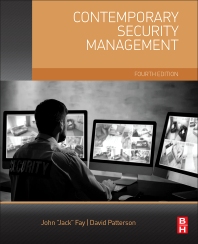5 Ways Social Media is Changing Corporate Security
Does your team have a comprehensive strategy in place?

Your phone chirps. It’s a text from the CEO. She is asking about the attempted coup in Ankara. How will it affect the supply chain? What is the contingency plan? Unfortunately, the incident happened about 45 minutes ago – this is the first you’re hearing about it.
Social media is transforming corporate security in fundamental ways. Here are five trends that chief security officers, intelligence analysts and others need to consider when building a social media strategy.
1. Expectations are changing.
The frantic text is just one example of the accelerated pace security teams are expected to maintain in a time of crisis. Any disruption can trigger a barrage of texts, calls and emails from enterprise stakeholders, each of them wanting to know the details of what happened and the potential impact on the company – often as the event continues to unfold. To provide a timely and coherent response, security teams must maintain a higher level of situational awareness and be more tightly integrated with the business – strategically, operationally and technologically.
2. Information is everywhere.
A decade ago, reliable information about major incidents came mostly through official channels. Social media has changed this by enabling security teams to crowdsource breaking news from on-the-scene sources. While this increased transparency allows executives to be more proactive, the volume of data is already staggering and growing larger every day. Essentially, social media represents a new threat information channel that requires diligent monitoring.
3. Social media is slippery.
Individual posts can contain alarming contradictions. While content is instantly available, it is not always vetted. It’s up to security experts to identify relevant signals in a stream of noise. Keeping up with new platforms is a constant issue. Meanwhile, mass peer-to-peer private messaging apps like Snapchat and WhatsApp are making it even harder to stay up on all the channels internal and external actors can use to create security issues.
4. Content fades, risks remain.
Social media posts may seem fleeting, but they pose serious short and long-term risks. Employees and customers use these platforms to post threats. Activists leak details about executives’ schedules. Executives’ children may inadvertently reveal this information by posting selfies or other seemingly innocent content. The impact of these exposures isn’t limited just to physical security. Social media can move the markets if observers note, for example, that a CEO’s private aircraft just landed in a city where a rumored acquisition target is headquartered.
5. Real-time is really problematic.
Events emerging in real-time can be chaotic. Teams must be aware of how social media content affects events in a continuous feedback loop. Fans of a celebrity may post his or her hotel details on Twitter while the limo is still in transit. A natural disaster may initiate a scramble for scarce logistical resources as competitors become aware of it, and the company that is five minutes behind on social media might be months late to market.
Experienced vendors should help CSOs work through these, and more complex issues, related to social media strategy with their teams. While this is easier said than done, CSOs should look for vendors who are able to discuss the required process improvements around staffing, reporting and intra-company communications that can significantly help to facilitate this transition/transformation.
Delineating lanes in the road, accountabilities and communications process between key stakeholders including corporate security, corporate communications, brand and marketing and the C-suite, is a critical part of this process. Finally, CSOs should expect greater transparency from social media vendors. Not all social media monitoring and analytics platforms are created equal and there are wide disparities in social media datasets and content. CSOs should ask their vendors about the size and content of the data they are pulling from social media platforms.
The bottom line? Social media is pulling corporate security teams into uncharted waters, and it’s too easy to get in over your head without a solid strategy in place.
Looking for a reprint of this article?
From high-res PDFs to custom plaques, order your copy today!









